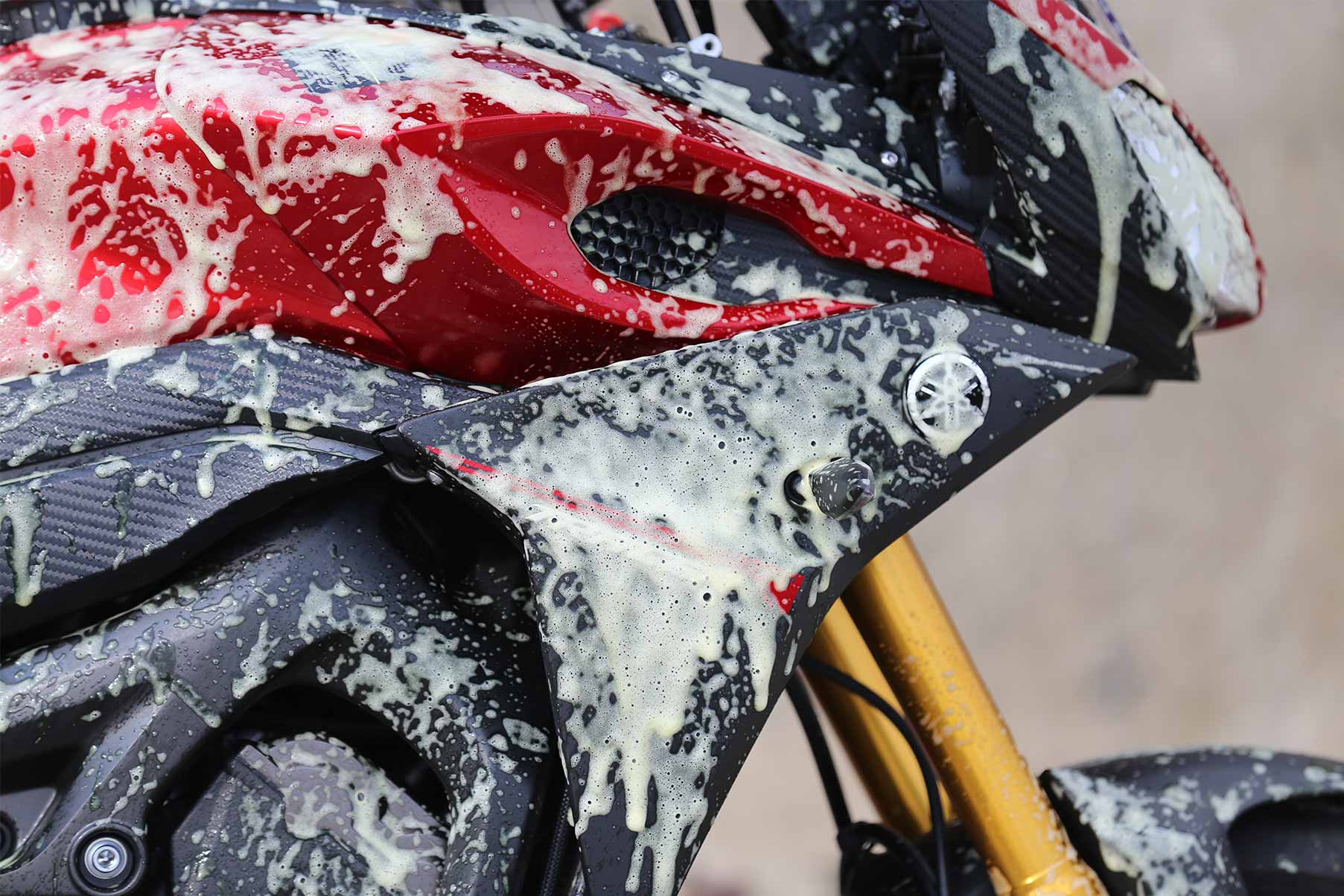Owning a classic or vintage motorcycle is not just about the thrill of riding a piece of history – It’s about preserving it. These timeless machines need more attention and care than modern motorcycles, especially when it comes to cleaning, rust prevention, and general upkeep – all made easy with Tru-Tension.
Whether you are new to vintage bikes or a seasoned enthusiast, proper maintenance is key to keeping your bike in top condition for years to come. Here, we will take you through some essential tips to help keep your classic ride running smoothly and looking as good as the day it rolled off the factory floor.
1. Regular Washing: More Than Just a Shine
While washing your motorcycle might seem like a cosmetic task, for classic and vintage bikes, it is crucial for preventing rust and corrosion. These older machines, often made with steel components and less modern coatings, are more prone to oxidation.
Start by using a gentle, motorcycle-specific cleaner and a soft sponge to avoid scratching the paint. Pay extra attention to areas prone to grime buildup, such as the underside of the frame, wheels, and exhaust.
Avoid using a high-pressure hose, as it can force water into delicate components. Instead, rinse with a gentle stream of water, and dry thoroughly with a microfiber cloth to ensure no moisture is left behind that could lead to rust.
Pro Tip: Using a motorcycle cleaning kit like ensures you have everything you need to give your bike the thorough clean it deserves, without risking damage to its precious parts.
2. Cleaning the Carburettor: Fuelling the Heart of Your Machine
The carburettor is an essential component of any vintage motorcycle, as it controls the air-fuel mixture your engine needs to run efficiently. A clogged or dirty carburettor can lead to poor performance, rough idling, or even complete engine failure.
To clean the carburettor, first, make sure the fuel line is shut off and remove the carburettor carefully. Disassemble it and use a carb cleaner to remove any debris, varnish, or grime that may have built up over time. Pay special attention to the jets and air passages. Once cleaned, reassemble and reinstall, making sure all parts are in good condition and seated correctly.
3. Avoid Fuels Containing Ethanol: A Potential Risk for Older Engines
Modern fuels often contain ethanol, which can cause significant damage to older motorcycles. Ethanol attracts moisture, which leads to corrosion in metal tanks and carburettors. It can also break down rubber components such as fuel lines and seals, leading to leaks and costly repairs.
Whenever possible, opt for ethanol-free fuel or premium-grade fuels with low ethanol content. If you are forced to use fuel containing ethanol, it’s a good idea to add a fuel stabiliser to prevent moisture buildup and maintain the health of your engine during storage.
To further protect your engine, consider using our fuel stabilisers. It helps neutralise the harmful effects of ethanol, keeping your classic motorcycle safe and sound.
4. Rust Prevention: Your Bike’s Biggest Enemy
Rust is a common issue for vintage motorcycles, especially those with steel frames and chrome finishes. Keeping your motorcycle dry and well-lubricated is the key to avoiding this problem.
After washing, always apply a rust-inhibiting lubricant to exposed metal parts, such as the chain, bolts, and chrome finishes. Covering your bike with a breathable cover when not in use will also help protect it from moisture.
5. Starting It Up When Not in Use: Keep the Engine Fresh
If you are storing your classic motorcycle for a long period, such as over winter, it’s important to start the engine every couple of weeks. This helps keep the internal parts lubricated and prevents the battery from draining completely.
When you do start it up, let it run for a few minutes, but avoid revving the engine too much when it is cold. Make sure you are doing this in a well-ventilated area to avoid any potential carbon monoxide build-up. You should also consider investing in a battery maintenance tool like a trickle charger to keep your battery healthy even when the bike isn’t in use.
6. Storing Your Bike: A Few Simple Steps for Long-Term Protection
Proper storage can make a world of difference in how your classic motorcycle holds up over time. If possible, store your bike in a dry, temperature-controlled environment to avoid extreme temperature fluctuations that can lead to condensation and rust. Use a breathable motorcycle cover and elevate the bike slightly to prevent the tyres from flattening over long periods of disuse.
Before storage, drain the fuel tank or use a fuel stabiliser to avoid ethanol-related issues, and disconnect the battery to prevent any accidental discharge. Regularly check on your bike during storage to ensure everything remains in good condition.
Keep Your Classic Ride Rolling with Tru-Tension
Maintaining a classic or vintage motorcycle is all about dedication, attention to detail, and having the right tools for the job. By following these simple maintenance tips, you can ensure that your bike stays in great condition and ready for the open road whenever the urge to ride strikes.
At Tru-Tension, we’re passionate about helping riders maintain their machines, whether you’re on a modern superbike or a vintage classic. With the right products and a bit of know-how, keeping your pride and joy in tip-top shape is easy. Happy riding!
Find out what to look for in your first motorcycle >
Learn methods of protecting your ride in the harsh winter months >

